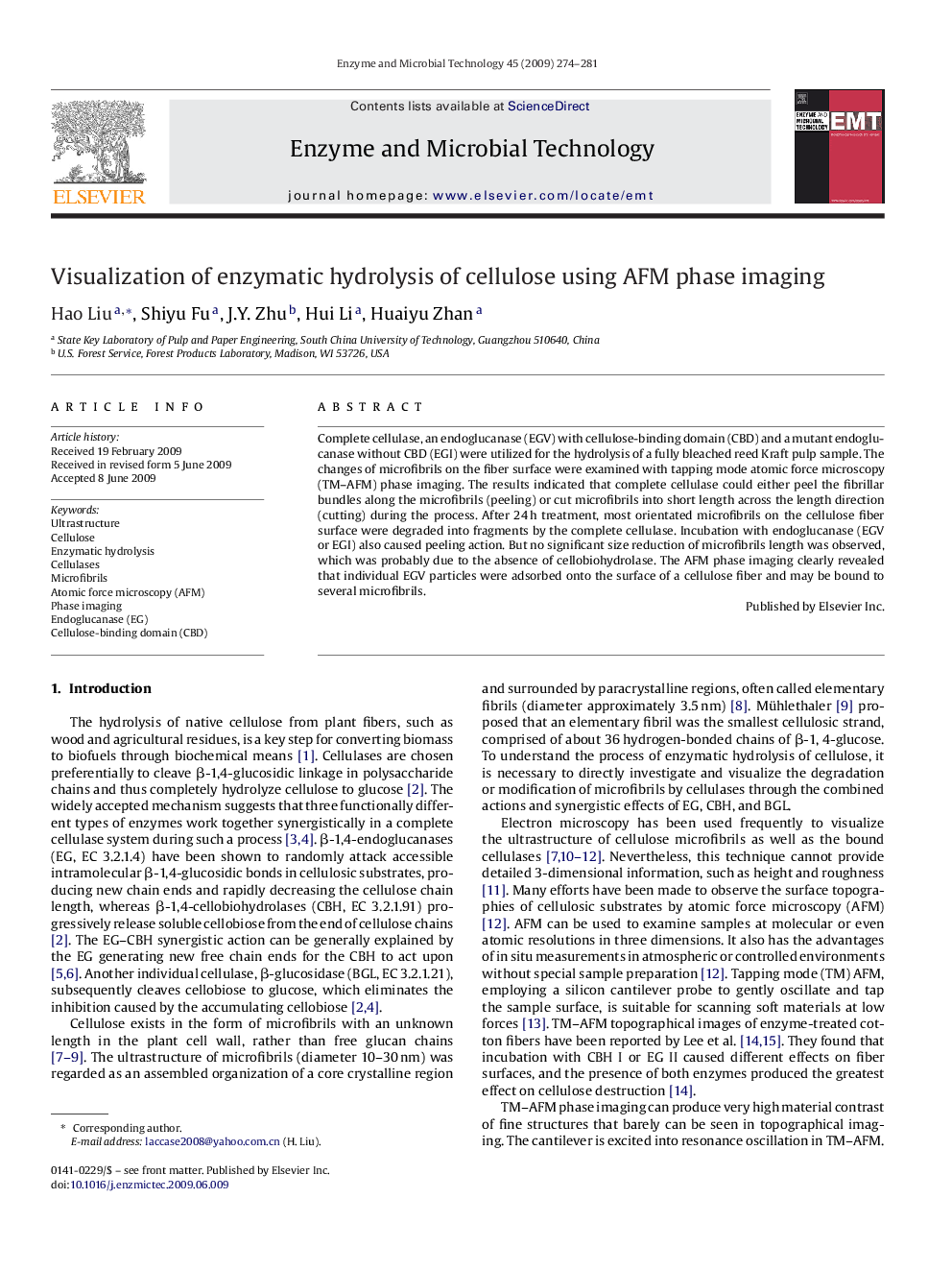| Article ID | Journal | Published Year | Pages | File Type |
|---|---|---|---|---|
| 17687 | Enzyme and Microbial Technology | 2009 | 8 Pages |
Complete cellulase, an endoglucanase (EGV) with cellulose-binding domain (CBD) and a mutant endoglucanase without CBD (EGI) were utilized for the hydrolysis of a fully bleached reed Kraft pulp sample. The changes of microfibrils on the fiber surface were examined with tapping mode atomic force microscopy (TM–AFM) phase imaging. The results indicated that complete cellulase could either peel the fibrillar bundles along the microfibrils (peeling) or cut microfibrils into short length across the length direction (cutting) during the process. After 24 h treatment, most orientated microfibrils on the cellulose fiber surface were degraded into fragments by the complete cellulase. Incubation with endoglucanase (EGV or EGI) also caused peeling action. But no significant size reduction of microfibrils length was observed, which was probably due to the absence of cellobiohydrolase. The AFM phase imaging clearly revealed that individual EGV particles were adsorbed onto the surface of a cellulose fiber and may be bound to several microfibrils.
